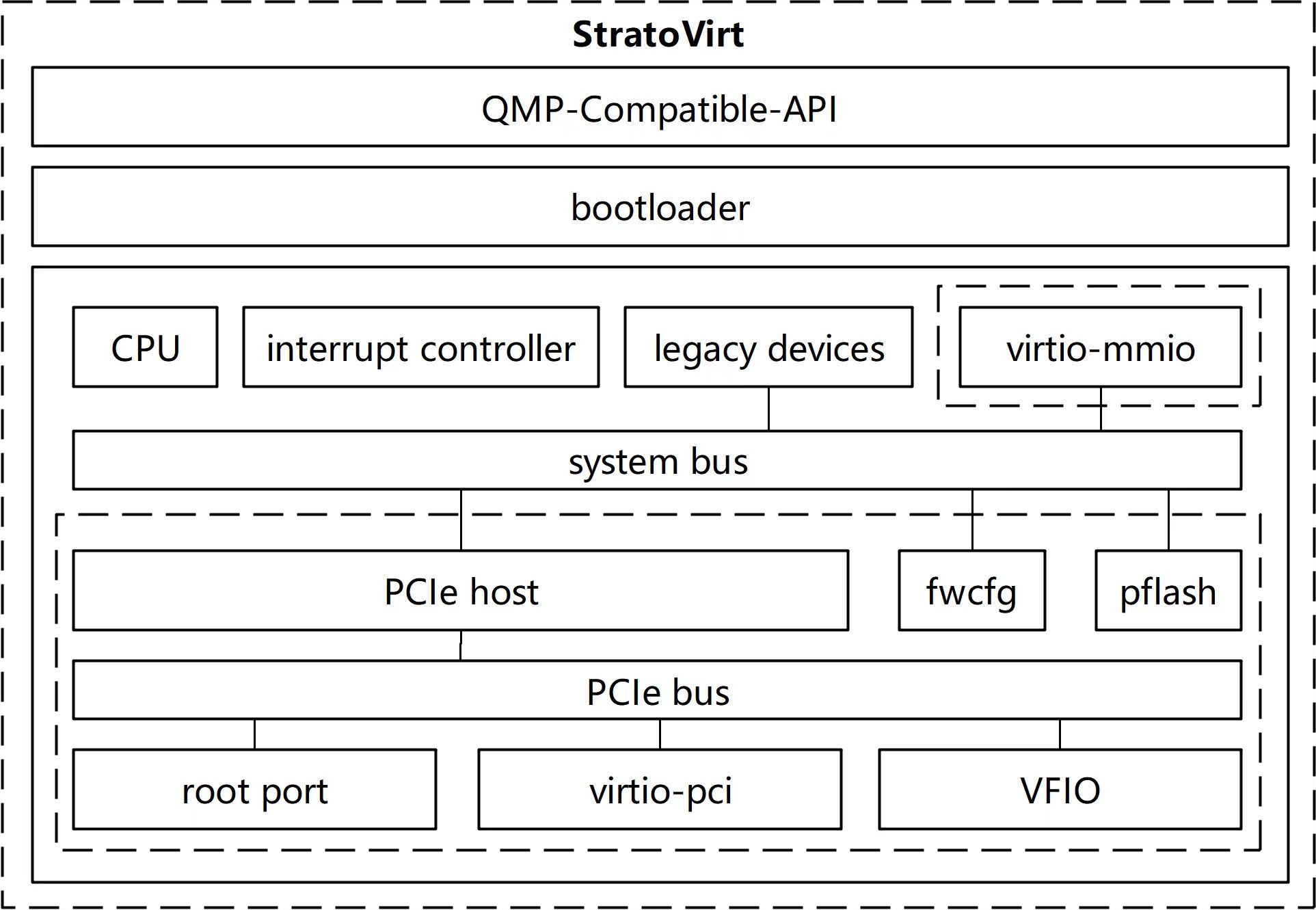Introduction to StratoVirt
Overview
StratoVirt is an enterprise-class Virtual Machine Monitor (VMM) oriented to cloud data centers in the computing industry. It uses a unified architecture to support VM, container, and serverless scenarios. StratoVirt has competitive advantages in key technologies such as lightweight low noise, software and hardware synergy, and Rust language-level security. StratoVirt reserves component-based assembling capabilities and APIs in the architecture design. Advanced features can be flexibly assembled as required until they evolve to support standard virtualization. In this way, StratoVirt can strike an optimal balance between feature requirements, application scenarios, and flexibility.
Architecture Description
The StratoVirt core architecture consists of three layers from top to bottom:
- External API: compatible with the QEMU Monitor Protocol (QMP), has complete OCI compatibility capabilities, and supports interconnection with libvirt.
- BootLoader: discards the traditional BIOS+GRUB boot mode to achieve fast boot in lightweight scenarios, and provides UEFI boot support for standard VMs.
- Emulated mainboard:
- MicroVM: Fully utilizes software and hardware collaboration capabilities, simplifies device models, and provides low-latency resource scaling capabilities.
- Standard VM: implements UEFI boot with constructed ACPI tables. Virtio-pci and VFIO devices can be attached to greatly improve the VM I/O performance.
Figure 1 shows the overall architecture.
Figure 1 Overall architecture of StratoVirt

Features
- Highly isolated based on hardware.
- Fast cold boot: Benefiting from the minimalist design, a microVM can be started within 50ms.
- Low memory overhead: StratoVirt works with a memory footprint of less than 4MB.
- I/O enhancement: StratoVirt offers common I/O capabilities and minimalist I/O device emulation.
- OCI compatibility: StratoVirt works with iSula and Kata containers, and can be integrated into the Kubernetes ecosystem perfectly;
- Multi-platform support: StratoVirt fully supports Intel and Arm platforms.
- Extensibility: StratoVirt has interface and design for importing more features, and can be extended to support standard virtualization.
- Security: fewer than 46 syscalls while running;
Implementation
Running Architecture
- A StratoVirt VM is an independent process in Linux. The process has three types of threads: main thread, vCPU thread, and I/O thread:
- The main thread is a cycle for asynchronously collecting and processing events from external modules, such as a vCPU thread.
- Each vCPU has a thread to handle trap events of this vCPU.
- I/O threads can be configured for I/O devices to improve I/O performance.
Restrictions
- Only the Linux operating system is supported, and the recommended kernel versions are 4.19 and 5.10.
- Only Linux is supported as the operating system of the VM, and the recommended kernel versions are 4.19 and 5.10;
- A maximum of 254 CPUs are supported.










